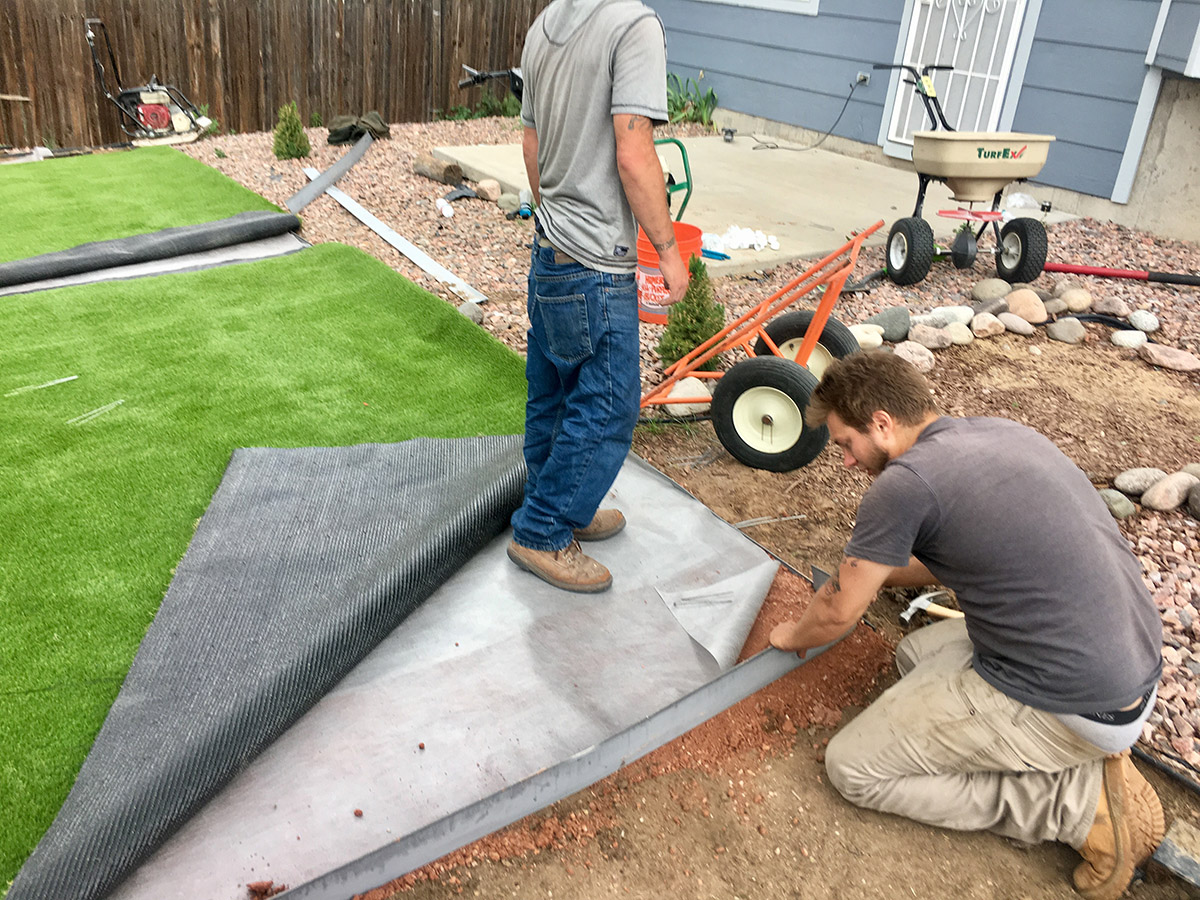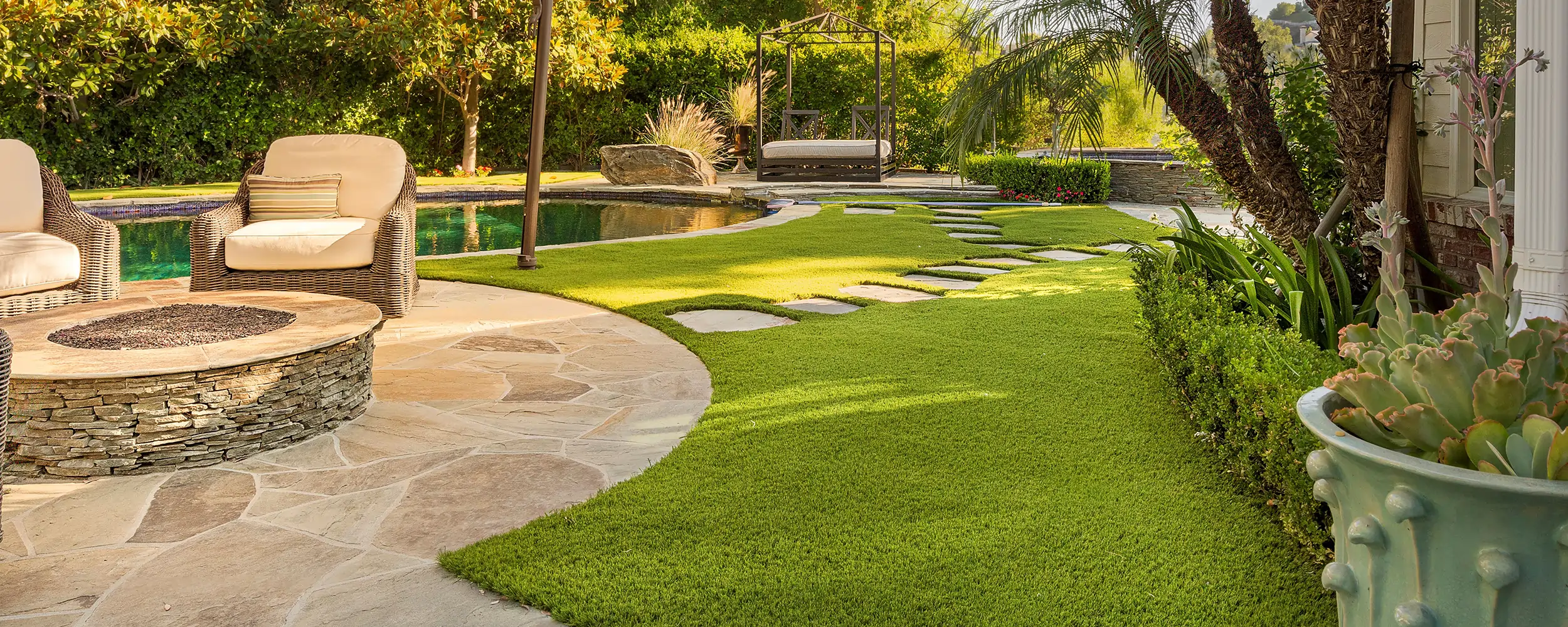Highly-Ranked Phoenix Turf Companies Focusing on Synthetic Grass Solutions
Highly-Ranked Phoenix Turf Companies Focusing on Synthetic Grass Solutions
Blog Article
Look Into the Environmental Benefits of Opting for Artificial Turf Solutions
The adoption of fabricated turf remedies provides a compelling possibility to resolve pushing ecological difficulties. By considerably lowering water usage and reducing the application of damaging chemicals, these alternatives not only advertise sustainable landscaping yet additionally safeguard neighborhood environments. The lower carbon footprint associated with decreased upkeep tasks contributes to an extra lasting technique to land administration. Nevertheless, the effects of these benefits expand beyond plain preservation efforts, questioning about their long-term influence on habitat conservation and overall eco-friendly equilibrium. Exploring these measurements exposes an intricate interaction worth considering.
Water Preservation Benefits
Among the most substantial benefits of synthetic grass is its ability to conserve water. Standard lawn yards call for significant watering, particularly in areas susceptible to drought or water constraints. On the other hand, fabricated lawn does not need watering, considerably decreasing the total need for water sources. This feature is especially beneficial in dry regions where water deficiency is a pushing issue.
By getting rid of the need for normal watering, synthetic grass adds to sustainable landscape methods and assists mitigate the ecological influence of too much water consumption. Additionally, the preservation of water encompasses the decrease of runoff, which can lead to dirt disintegration and waterway contamination.
Furthermore, the installment of synthetic grass enables communities and home owners to allocate water resources much more effectively, concentrating on necessary uses such as drinking water and farming. The shift in the direction of artificial lawn not just advertises liable water use but additionally aligns with more comprehensive ecological objectives focused on preserving all-natural sources.
As neighborhoods significantly prioritize sustainability, the water conservation benefits of artificial turf present a compelling case for its adoption in property and industrial landscape design jobs.
Decreased Chemical Usage
The shift to synthetic grass significantly reduces the dependence on chemical therapies frequently used in all-natural yard upkeep. Standard turf management normally includes the application of herbicides, plant foods, and chemicals to promote development and control insects. These chemicals can present dangers to human wellness, regional wildlife, and the setting, contributing to soil and water contamination.
In contrast, fabricated grass removes the need for these unsafe compounds. By lessening the launch of synthetic compounds into the ecosystem, fabricated lawn advertises healthier dirt and water systems.
Furthermore, the lack of chemical drainage connected with fabricated grass installations aids secure regional waterways from contamination, supporting aquatic life and keeping biodiversity. Arizona artificial turf. As neighborhoods significantly prioritize lasting methods, choosing synthetic grass presents a practical solution that lines up with ecological preservation goals. With this change, homeowner can enjoy lavish green spaces without compromising environmental wellness, leading the means for an extra lasting future
Reduced Carbon Impact

Furthermore, the installation of synthetic grass can cause considerable water preservation. All-natural lawns need significant amounts of water for irrigation, which not only contributes to the carbon footprint related to water useful reference removal and therapy but likewise stress local water sources. On the other hand, fabricated grass requires minimal upkeep, calling for no watering, thereby substantially decreasing water use and its linked energy prices.
In addition, the longevity of synthetic lawn adds to its decreased carbon effect. With a lifespan of as much as 15 years or even more, the requirement for constant substitutes is decreased, resulting in less waste and lower power consumption in manufacturing and taking care of conventional grass alternatives. Generally, synthetic grass provides a sustainable alternative for eco conscious landscape design.
Habitat Conservation
Environment conservation is a vital consideration in the dispute over landscaping selections, specifically when comparing synthetic lawn to all-natural grass. All-natural yard lawns often call for substantial upkeep, consisting of the use of herbicides, chemicals, and fertilizers, which can negatively impact local environments. These chemicals can seep right into the soil and waterways, harming native vegetation and animals and interfering with local habitats.
Artificial turf eliminates the requirement for harmful chemicals, thereby shielding neighboring wildlife and maintaining the integrity of surrounding communities. The setup of man-made grass can lead to the conversion of former yard areas right into even more biodiverse landscapes, such as pollinator yards or native plant linked here areas, which can support regional wild animals.
Ultimately, the shift to synthetic grass not just preserves water and reduces maintenance efforts however also cultivates a much more harmonious partnership in between human activities and the all-natural setting, advertising environment preservation at the same time.
Long-Term Sustainability
Long-lasting sustainability is a crucial variable in evaluating the advantages of man-made turf over traditional grass yards. One of the most substantial benefits of synthetic lawn is its longevity; it can last up to 15-20 years with minimal maintenance, whereas all-natural grass requires constant reseeding and replacement. This durability reduces the requirement for constant sources, such as water, fertilizers, and pesticides, which are necessary for keeping a healthy and balanced turf lawn.
Furthermore, synthetic grass adds to a decrease in carbon exhausts connected with lawn care devices. Standard lawns commonly require gas-powered mowers, trimmers, and blowers, every one of which add to air pollution. Turf installation phoenix az. On the other hand, synthetic grass eliminates the requirement for such devices, advertising a cleaner atmosphere
Moreover, the production of synthetic grass progressively makes use of recycled products, enhancing its sustainability account. As manufacturers embrace green practices, the ecological impact of synthetic grass remains to lessen.

Conclusion
The fostering of man-made grass solutions offers substantial ecological advantages, including considerable water preservation, decreased reliance on unsafe chemicals, and a lower carbon footprint. Artificial lawn aids in protecting natural habitats by lessening land disturbance and advertising long-lasting sustainability via the use of resilient materials. Collectively, these variables emphasize the capacity of synthetic grass to add favorably to environmental wellness and supply a viable alternative to standard landscape design practices in an increasingly resource-conscious world.
In comparison, artificial lawn does not require watering, substantially decreasing the general need for water sources. By minimizing the launch of synthetic substances right into the environment, fabricated lawn advertises healthier soil and water systems.
Furthermore, the setup of synthetic lawn can result in significant water preservation. In comparison, artificial grass needs minimal upkeep, needing no watering, thus substantially lowering water usage and its linked power prices.
Report this page